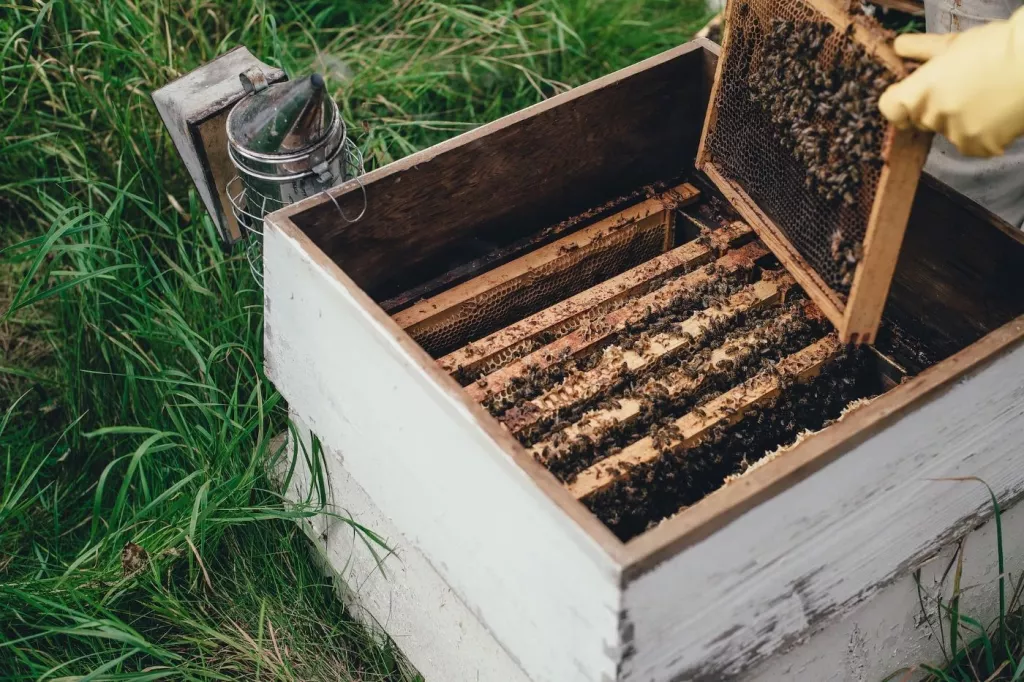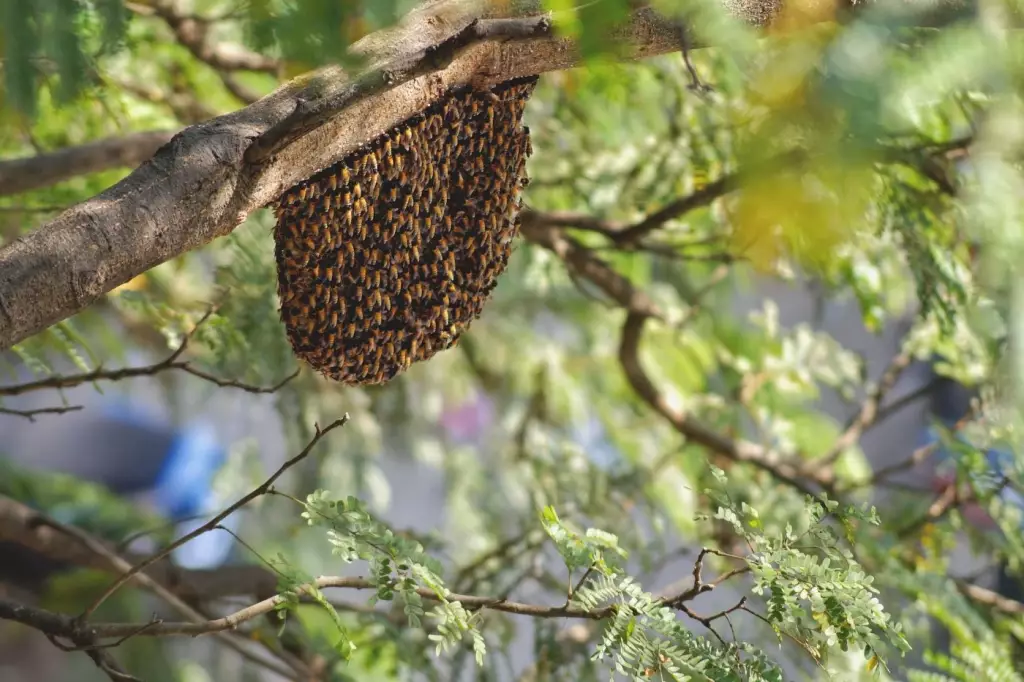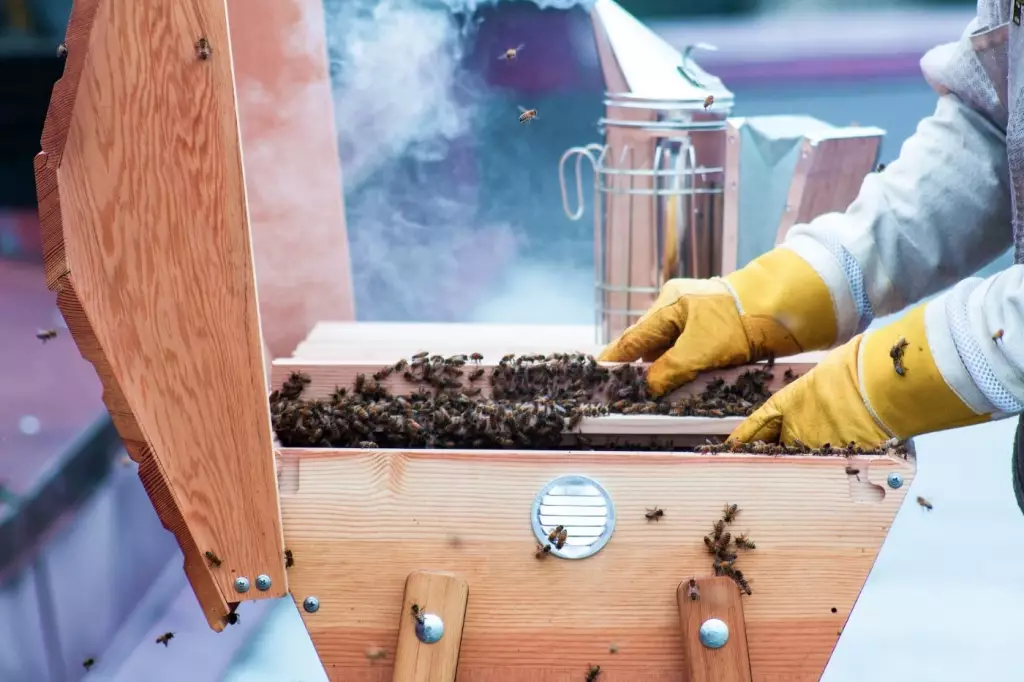What Is The Outside Of a Beehive Made Of? (Natural vs. Man-Made)
A beehive is a manufactured structure imitating the natural set-up of a bee's nesting site. Common beehives are made of wood, but other materials are now being used by beekeepers for better management of the hive. Let's take a closer look at what the outside structure of a beehive is made of.
A natural beehive, or nest, that is made by bees is made of beeswax and propolis. The man-made beehives, on the other hand, are made up of wood, either in box forms, hollow logs, or woven sticks, each with different features mirroring a natural beehive. Plastics can be used too.
Knowing the right materials to create a perfectly suitable home for bees is a good step in beekeeping. After all, many important activities happen inside the beehive, which is why the outside structures need to offer enough strength. This article will discuss what the outside structure of a beehive is made of, whether natural or man-made.
Summary
- Beehives are created to mimic the set-up of a bee nest in the wild.
- Bee nests are made up of beeswax and propolis.
- Beehives are mostly made up of different kinds of wood, designed for the purpose of honey extraction.

On this page:
Natural Beehives vs. Man-made Beehives
Bee nests are made by bees themselves, especially those in the wild, and are often built in open cavities like the hollowed portions of trees. Beehives, however, are man-made structures specifically designed to house bees and extract honey and other bee products. The terms "beehive" and "bee nest" are commonly used interchangeably.
A bee nest ( or the natural beehive ) is made mostly of beeswax and propolis. Beeswax is what forms the structure of the hive, or to simply say, beeswax is the hive itself. Bees create beeswax by eating honey and converting it into sugar inside their bodies.

To form the hive, special glands in the bees' abdomen produce beeswax and excrete it. Once excreted, the wax easily hardens when exposed to air and forms a wax scale. These wax scales are chewed by the producing bee again or by other nearby bees, mixing them with saliva to form the right consistency of wax to be added to the comb and the hive structure.
Additionally, the hive made of beeswax will have to be further tended and made compact, and this is where propolis comes in, quite literally. Propolis collected by bees from tree buds is used to fill small holes and crevices in the hive and glue together parts of the honeycomb.
Propolis is a very sticky substance because it is made of 50 percent resin, which makes it a good insulator and keeps the cold out. It can also be used to change the shape of the hive or smooth rough surfaces.
Beehives, the man-made structures designed to mimic a bee nest , are on the other hand made up of wood materials, with a few versions that are made up of plastics. Since beekeeping has been a rampant livelihood, humans have devised a way to domesticate bees better by building beehives, instead of hunting for bee nests.
Modern designs of beehives have allowed beekeepers and inspectors to monitor the hives effectively without disturbing them completely. It has also offered efficiency when extracting honey, is expandable when the need arises, and has effective temperature regulation since the wood used is very light. The outside top cover is also provided in man-made beehives to protect the colony from unfavorable weather conditions.
Common Materials That Make Up a Beehive
Wood is generally what makes the outside of a beehive and is the most commonly used material in these times. Beekeepers choose wood types for making the hives by considering the durability, price, and availability of the wood. The following wood types are most commonly considered by beekeepers:
Pine
Due to their light nature, low cost, and widespread availability, pines are commonly used to make beehives. The cons, however, are that since they are light, they are not very durable, but beekeepers use paint to help them last longer.
Cedar and Cypress
When it comes to durability, cedar and cypress are undoubtedly better than pine. Cedar wood oil also produces a nice fragrance that deters insects and prevents the rotting of the wood. However, having all these characteristics makes cedar and cypress unavailable in some regions and relatively pricey.
Fir
Fir is considered for beehive construction due to its durability. Since fir wood is tight and non-porous, it is more compact, and cases of warping or twisting are less common.
Some manufacturers have explored the use of plastics in beehives and made insulated versions of the modern beehive design. Insulated plastic beehives ought to provide better protection against unfavorable weather conditions, prevent moisture buildup, and offer more durability than wood hives. Several downsides have yet to be explored since wood is more commonly used than plastic, and plastic is also more expensive than wood.
Different Types of Man-Made Beehives
As discussed above, in the wild, bees make their nests in hollow trees. If these natural hives are dissected, it will reveal the arrangement of the honey, pollen, and brood, as well as the positioning of the queen, and the drones.
Man-made beehives are made to be just like these bee nests. The difference between the types of man-made beehives, however, lies in the structural composition of each.
Log hives
As the name suggests, they are made from logs. A tree log is split in half, and the contents are carved out to make room for the hive set up inside. During honey collection, the hive is split open and can be put back together for the next harvest.
Basket hives
Basket hives get their name because they resemble a finely woven basket made of sticks, with an outer wall covered in wet soil and cattle dung and ends sealed with banana fibers. There is only one entry point that beekeepers leave out for bees. Compared to log hives, basket hives are good for just one harvest.

Top bar hive
The top bar hive is one of the oldest types of beehives that uses individual bars laid on top of the hive cavity, from which bees naturally build their comb. This type of beehive allows easy inspection and collection of honey, without disturbing the bees too much.
Langstroth hive
The most commonly used type of man-made beehive is the Langstroth beehive. It uses frames where bees build honeycombs. The advantage of this type of hive is that the bees have separate areas from the honey supers, which produces better and clearer honey. Framed beehives also allow easy honey extraction, despite requiring the use of a centrifugal honey extractor.